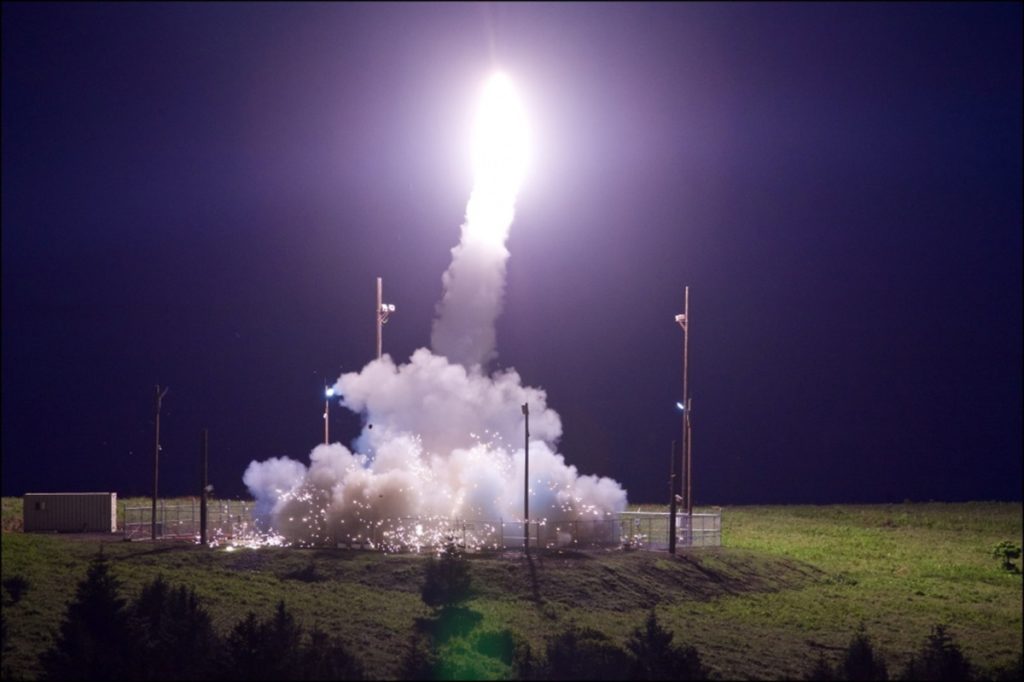The Peninsula
Why North Korea’s Latest ICBM Test Isn’t that Surprising

By Troy Stangarone
After conducting a series of missile tests in the summer and late fall, including its first two intercontinental ballistic missile (ICBM) tests, North Korea went 75 days without a missile test. In some corners there had been hope that North Korea’s pause indicated an openness for talks, but that prospect was always tempered by the knowledge that Pyongyang tends to scale back tests in the fourth quarter. Now that North Korea has tested the new Hwaseong-15, it is clear that North Korea had not paused its tests in the hopes of opening talks with the United States, but that should not come as a surprise.
There was little reason to believe that North Korea had halted its tests in the hopes of opening the door to dialogue. If North Korea was open to talks over its nuclear program, it would be in a much stronger bargaining position if its ICBMs were capable of hitting all of the United States rather than only having the ability to hit South Korea, Japan and Guam. Additionally, more than a month into the pause in its tests a North Korean official indicated that Pyongyang would not negotiate with the United States prior to achieving the ability for its ICBMs to reach the eastern coast of the United States.
While it is the case that there have been fewer North Korean missile tests in 4th quarter, there have been changes in the patterns since Kim Jong-un came into power. Testing under Kim Jong-un has been significantly more robust than under either Kim Il-sung or Kim Jong-il.
Since Kim Jong-un succeeded his father, North Korea has conducted 70 missile launches. These include a range of ballistic missiles, but also other types including anti-ship cruise missiles. There were relatively few tests during Kim Jong-un’s first two years in power. In 2014, the number of tests increased to 15, but only one of these tests was a medium range ballistic missile. This began to change in 2015, but only by 2016 had Pyongyang significantly shifted from short range tests to medium range and longer ballistic missile tests. If anti-ship and short-range ballistic missiles are excluded and the focus is only on the medium, intermediate, submarine launch ballistic missiles, and ICBMs, nearly 19 percent of North Korea’s missile tests longer than short range ballistic missiles have taken place in 4th quarter.
Now that North Korea has declared itself a nuclear state, the question is what comes next? While North Korea has declared success and demonstrated an ability to reach the eastern coast of the United States, we should not expect the tests to necessarily end. It is still unclear if they have mastered reentry and it is unclear if the most recent test used a lighter dummy warhead which would have expanded the ICBM’s range. So, there may still be technical details for North Korea to work out.
Additionally, while North Korea previously indicated that it would only talk with the United States once it had developed an ICBM capable of reaching the eastern U.S., neither the United States nor North Korea may want to move into talks quickly. The United States will likely want to allow sanctions to have additional time to apply pressure on North Korea, while North Korea may not want to enter talks quickly to avoid the perception that its weapons programs are negotiable.
For the moment, we should expect relatively quick passage of new enhanced sanctions at the United Nations and potentially increased efforts to enforce the reduction of North Korean trade. However, we also shouldn’t be surprised if in December or early next year North Korea conducts another test and we remain further off from negotiations. North Korea likely still has technical issues to resolve and may be looking to increase tensions on the Korean Peninsula. Recall that 30 years ago on November 29, 2017 North Korea blew up a Korean Air flight midair as a warning against those who would participate in the 1998 Summer Olympic Games in Seoul. Whether as part of North Korean efforts to conclude their weapons programs or an effort to create anxiety in the run-up to the 2018 Winter Olympic Games in PyeongCheong the international community should expect continued provocations from North Korea.
Troy Stangarone is the Senior Director for Congressional Affairs and Trade at the Korea Economic Institute of America. The views expressed here are the author’s alone.
Photo from U.S. Pacific Command’s photostream on flickr Creative Commons.
